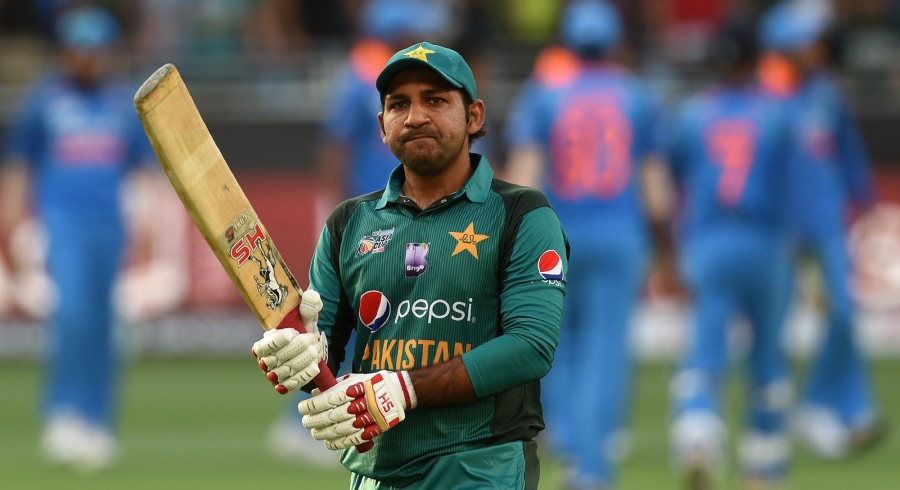Men in Green suffered humiliating eight-wicket defeat in the match against India
 PHOTO: AFP
PHOTO: AFP
Overdoing or overplaying has and never will benefit anyone, and Pakistan’s loss to India on Wednesday was a prime example of it.
Pakistan, after a long wait, had finally got on to the path of developing into a limited-overs side which promised consistency in all three departments when playing against the best and the worst teams in cricket.
The recipe for success was to abolish the defensive approach fed into the minds of players during Misbahul Haq’s reign and inculcate a positive and aggressive approach in the team.
If we take a look at Pakistan’s performance soon after Misbah left the ODI fray and Azhar Ali assumed the leader’s role only to fail miserably, a state of confusion ruled Pakistan’s performances where they couldn’t comprehend which was the better option: to attack or to defend.
And then, with Sarfraz Ahmed came clarity — aggressive and positive intent was agreed upon as the way forward.
Team had to be supercharged just to suppress the negative mind set and pessimistic approach team had become so akin to.
Then came the Champions Trophy and the world saw what Pakistan could do when called to action.
No one was able to withstand them; they became invincible in the truest sense, beating every team that came their way with utter ease and clinical precision.
Words like aggression, aggressive approach and positive intent were embedded into every answer during press conferences and media talks.
But they had forgotten, overdoing and overplaying has and never will benefit anyone.
Overcharged Pakistan
Question is, what do Pakistan lose if they play with supercharged emotions?
The answer is, they stop fearing and star overthinking.
India had come after playing a match against Hong Kong, where they were taken to the task by minnows. Pakistan thought their bowling lineup would be tired and hence batting first is the best option — overconfidence and underestimation of India’s bowling resources.
A fresh Jasprit Bumrah was called into the team, Bhuvneshwar Kumar was his usual — all precise and solid on line and length. Pace in UAE is never the name of the game so spinners were also a part of the squad.
What happened next is no secret. Pakistan, aggressive again, lost wickets cheaply while playing rash shots. Excluding Babar Azam’s dismissal, no other batsman was sent walking because of a good delivery — overplaying aggression.
And with such a meager total on the board and Mohammad Amir looking like a shadow of his Champions Trophy form, there was no bunny in the hat that Pakistan could pull out in Dubai.
Pakistan need to calm down
Sarfraz’s inning against India at the number five position, if one watches closely, is an example of what Pakistan are doing.
Itchy presence on the pitch, trying to extract runs on every ball, being hyperactive rather than calm and composed was what Pakistani batsmen did all day long against India.
Sans Azam and Shoaib Malik, no player read the script and adjusted. Hit out or get out was the supposed plan everyone was following.
There is no doubt that this kind of aggression is the very reason Pakistan claimed their maiden Champions Trophy, but now they are simply overdoing it.
An unrestrained approach worked before because players had to break out of the old shackle; extra energy was needed to turn things around, but once out, overexertion may lead to draining out sooner than expected.
If Pakistan are to lift the Asia Cup the third time around, and more importantly if they want to win the 2019 50-over World Cup, they need to first learn and then practice ‘controlled aggression’.
Otherwise, what happened against India will become the new script that Pakistan fans will witness every now and then.
